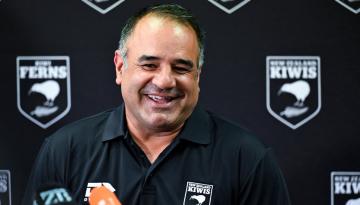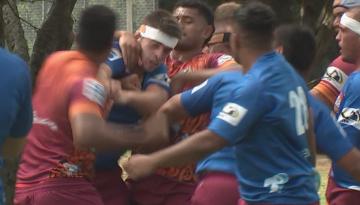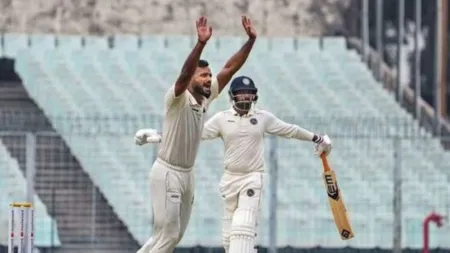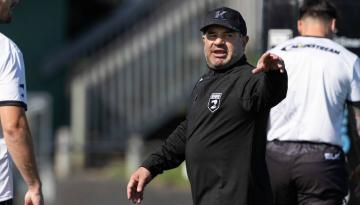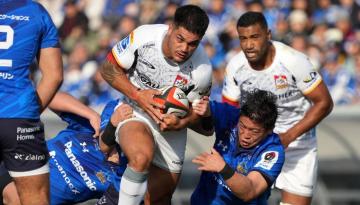Paris Olympics: Two goalkeepers, one spot and a selection headache for Indian hockey team
PR Sreejesh has retirement plans. But he has no reason to walk into the sunset just yet.
Krishan Pathak is eyeing succession. The understudy, now an heir apparent, patiently waiting for his time.

Together, they form the most formidable goalkeeping pair India have had in more than a decade. Alternating quarters, pushing limits and outdoing each other. But when the time comes, in July during the Paris Olympics, one will have to make way for the other.
In every other tournament, countries field at least an 18-player squad that includes two goalkeepers. But the squad restrictions at an Olympics, where only 16 members can be entered, mean coaches are often forced to sacrifice a goalkeeper to accommodate an additional outfield player.
At the Tokyo Olympics, Sreejesh was the No. 1 goalkeeper by a country mile, and Pathak travelled as a reserve. The former made a last-minute save that ended India’s decades-long medal drought. The latter was the only player not to get a medal because he wasn’t officially in the team.
In the three years since, Pathak has caught up. Whether it’s enough to challenge the evergreen Sreejesh, who yet again came up with an age-defying performance against Spain on Monday, is a question coach Craig Fulton will have to find an answer to.
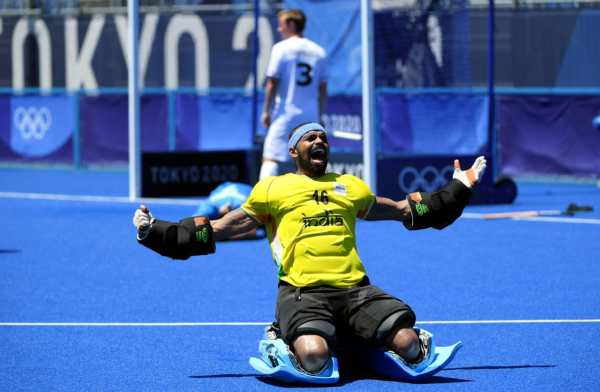 At the Tokyo Olympics, Sreejesh was the No. 1 goalkeeper by a country mile (PTI Photo/Gurinder Osan)
At the Tokyo Olympics, Sreejesh was the No. 1 goalkeeper by a country mile (PTI Photo/Gurinder Osan)
Fulton has set a few selection parameters. “Current form, penalty corner defence, shoot-outs and managing his defence in terms of how he organises,” he says. “That, from a leadership point of view is very important.”
This puts Sreejesh, 35, and Pathak, 26, in a terrific duel, which can only be good news for the team.
Sreejesh had to unlearn and relearn the art of goalkeeping mid-career, which enabled him to not just survive the big churn in Indian hockey but also emerge as one of the finest the country has ever produced.
His big frame allows him to easily cover all corners of the goal and requires less power. In shoot-outs, he is among the best in the world and is an on-field coach, always ensuring the players play within the structure.
Dennis van de Pol, the Dutchman who frequently flies down to India to train the goalkeepers, had once said that Pathak’s biggest asset is that opponents think he can be beaten easily because he is smaller. But what he doesn’t have in height, he compensates with power and agility.
“Even balls that are going to the top corner, which I would feel would be tough for him, he made them look so easy,” Van de Pol says. “This wasn’t the case three-and-a-half years ago.”
Guiding hand
Sreejesh has had an outsized role in where Pathak is today. The veteran of three Olympics provided his junior colleague – and other goalkeepers – with something he never got: proper guidance.
“After 2012 (Olympics), I relearnt my basics. That was the toughest time for me,” Sreejesh says. “How you stand, where you keep your hands. In India, you keep your hand like this (palm open, chest high) or you just move all the time. You (were) never (taught to) stay calm. We never had former goalkeepers who learnt modern techniques and imparted them to us. They learnt 1+1 is 4 and taught us that. But no, 1+1 is 2.”
The archaic coaching methods hit Sreejesh in the face especially when he learnt what was happening in Europe, where because of a proper league structure there used to be full-blown research into goalkeeping methods as well as the latest scoring techniques.
Sreejesh ensured the generation that followed him would not have to endure the same problems. During the 2016 Junior World Cup, which India won and when Pathak burst onto the scene, he took a break from training and joined the team as a goalkeeping coach – a career he is considering the day he decides to hang his boots.
From that batch, Pathak has emerged as a worthy candidate to eventually succeed his mentor. “Before I came into the team, I watched Sree bhai play. I learnt a lot by just watching him. From there to joining the senior team, then training alongside him and now playing with him, it’s been a big learning phase,” Pathak says.
Pathak had to wait for his chance with the national team, getting sparse opportunities as Sreejesh became the reliable custodian of India’s fortunes. But former coach Graham Reid, who guided India to the Olympic podium, began giving both goalkeepers an equal opportunity by playing them in alternate quarters.
Top Sports News Now- New Zealand vs Australia Live Score, 1st T20: AUS, NZ in race for Chappell-Hadlee Trophy; Toss, Playing XI, streaming updates
- Cooking-cleaning, looking after horses and stables: What went into India’s first-ever Olympic quota in Equestrian Dressage
- Fast bowler Akash Deep likely to make Test debut at Ranchi
”Thanks to Graham Reid for that. Goalkeeping cannot be improved by sitting on the sidelines. You need to step in, feel the pressure and experience it,” Sreejesh, who mostly plays the second and fourth quarters, says. Who goes when depends largely on which goalkeeper will be needed in case of shoot-outs, with the one playing the fourth quarter staying on for the tie-breakers as well.
Training and playing together has ensured a ‘healthy competition’, Pathak says. Gone are the days of insecurity, Sreejesh laughs. “Whatever we do, the team should win. When he gets a chance, I feel he should do well so that the team does well. We have moved on from the old mentality.”
Disclaimer: The copyright of this article belongs to the original author. Reposting this article is solely for the purpose of information dissemination and does not constitute any investment advice. If there is any infringement, please contact us immediately. We will make corrections or deletions as necessary. Thank you.
